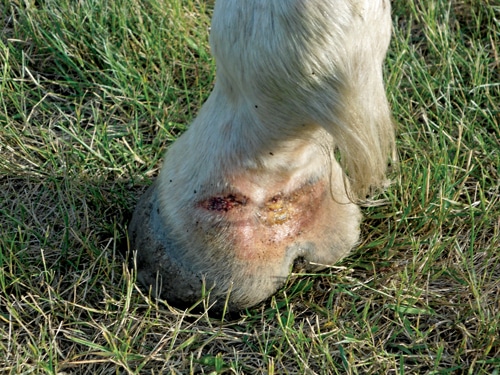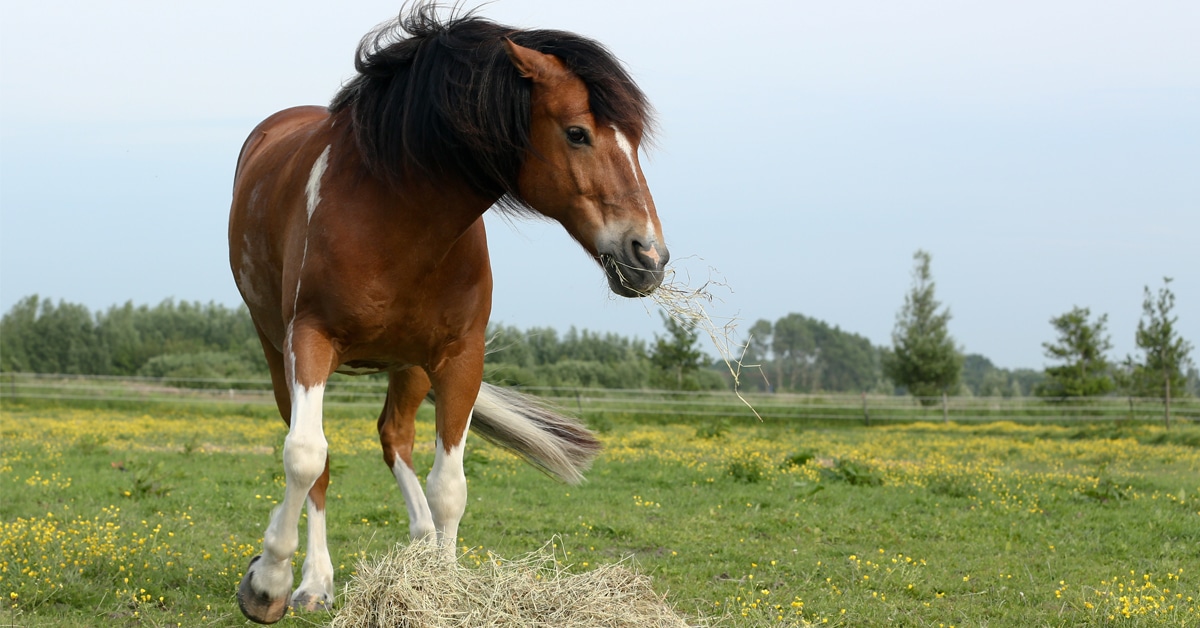With antibiotic resistance a growing concern in both human and veterinary medicine, the way that antibiotics are used for equine skin infections may need to change – not just to reduce the increase of antibiotic resistance in horses, but also in consideration of the potential risk of transmission of resistant bacteria between horses and people.
Antibiotics work by targeting pathogenic bacteria that cause bacterial infections, but an overuse of antibiotics has allowed bacteria to evolve to be resistant to these processes. When antibiotic resistance occurs, bacterial infections become more difficult to treat, and may require more medication and more time in order to heal.
The World Health Organisation (WHO) has listed antimicrobial resistance (AMR) as one of the top global public health threats. According to the WHO, “it is estimated that bacterial AMR was directly responsibly for 1.27 million global deaths in 2019 and contributed to 4.95 million deaths.” One of the main causes of the rise of antimicrobial resistance has come from the misuse and overuse of antibiotics across both humans and animals.
A 2025 Viewpoint article in the AVMA Journals by Rosanna Marsella, a researcher and professor at the University of Florida’s College of Veterinary Medicine, argues that veterinarians need to change their approach to antibiotic use for skin infections.

Pastern dermatitis, also known as mud fever, greasy heel, or scratches, is a common skin condition that can be caused by Staphylococcus aureus bacteria. (Dr. Trisha Dowling photo)
Marsella has been with the university for over 30 years, and said that she’s noticed it is becoming more common for horses with skin infections to be resistant to antibiotic treatment. This could mean poorer health outcomes for these horses when they’re trying to recover from infection – and there’s also a related risk to human health.
“I think the part that is relevant for people to understand is that both humans and horses carry Staph aureus,” Marsella said. Staphylococcus aureus is a bacterium that’s commonly found on the skin and in the nasal passages; it usually doesn’t cause harm, but if there are skin wounds, tissue damage or a weakened immune system, this opportunistic bacteria can enter the body and cause infections. Some types of S. aureus are resistant to common antibiotic treatments, and some strains have developed mechanisms to pump antibiotics out of the cell, thereby reducing their effectiveness. Some common skin conditions horses can develop include pastern dermatitis (scratches), folliculitis (inflammation of hair follicles), impetigo (bacterial skin infection), and mucocutaneous pyoderma (infection near mucous membranes).
MRSA (methicillin-resistant staphylococcus aureus) are a group of staph bacteria that are resistant to common antibiotics including methicillin, erythromycin, and others. Both staph and MRSA are considered zoonotic pathogens, meaning they can be transmitted between horses and humans. This transmission can occur through direct contact, or indirectly through contaminated objects such as buckets or tack, and tend to proliferate on densely-populated farms and in equine vet clinics.
The fact that S. aureus bacterium is carried in the nasal passages of both humans and horses is worth noting, Marsella said. “Handlers or riders or owners have the face of the horse right there. When you bridle the horse, you know you are touching all those [transmission] areas.”
Prevention is key
To help prevent increasing antibiotic resistance, veterinarians need to practice responsible antibiotic stewardship, Marsella said. That includes being mindful in how they’re selecting antibiotics and how frequently they’re prescribed when treating skin infections. Sometimes people use broad spectrum antibiotics that target several different types of bacteria, even when it’s not necessary. Marsella warned, “These are big, powerful antibiotics that should be used only when absolutely needed.” Practicing proper hygiene, such as frequent handwashing and avoiding using shared equipment, can reduce transmission risk between horses. (Read tips on Equine Biosecurity Principles and Best Practices here.)
Marsella also stresses that skin infections are often secondary to an underlying disease that isn’t being successfully addressed, with allergies being one of the most common culprits.
“As veterinarians, we need to do a better job successfully managing the allergies so that these animals don’t come down with these severe secondary bacterial infections, because it becomes a slippery slope,” Marsella said. Preventing infections is key, as is educating owners about long-term management. When infections develop, rather than immediately resorting to systemic antibiotics, Marsella prefers to “educate people on how to do topical antimicrobial therapy and refrain from using broad-spectrum antibiotics for any evidence of infection, or a fear of possible infection.” Topical antimicrobials include antibiotic ointment containing neomycin, bacitracin, and polymyxin, silver sulfadiazine, and even Manuka honey, and should “always be the first choice.”
If an antibiotic is prescribed, owners need to follow the proper course of treatment and administer the antibiotics for the correct duration. “If you stop as soon as things look better, in a few weeks you’re right back to where you were,” Marsella noted. “This starting and stopping is how you end up getting [antibiotic] resistance.”
The main thing to remember is that we’re all connected.
“Our health is connected to the health of other people, the environment, and the animals, particularly because the relationship between animals and people can be very close,” Marsella said.
“We have a shared responsibility – physicians, veterinarians, owners – so the more educated we can become, then the better off everyone is going to be.”
The Latest









